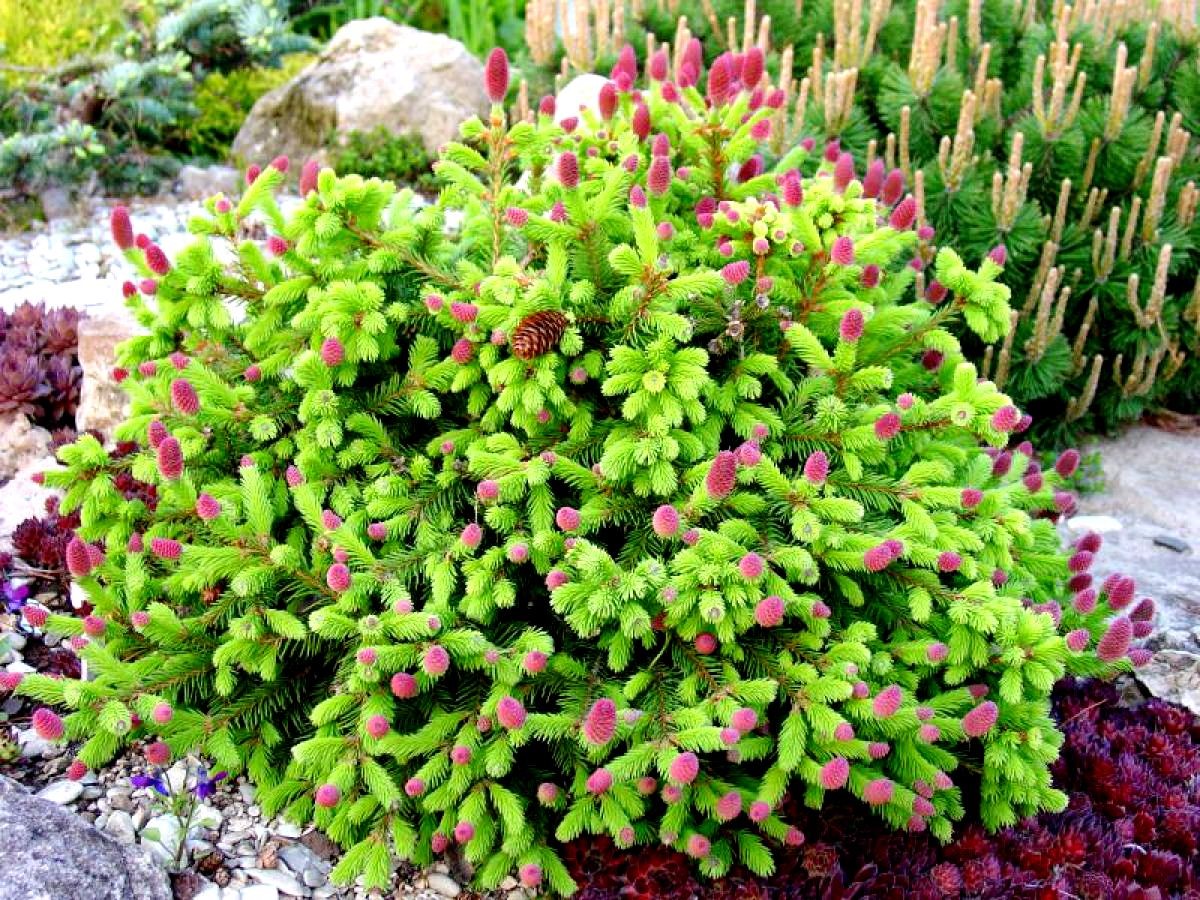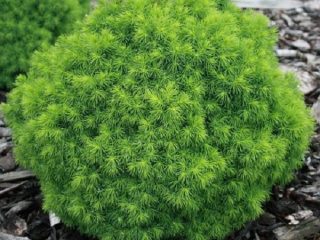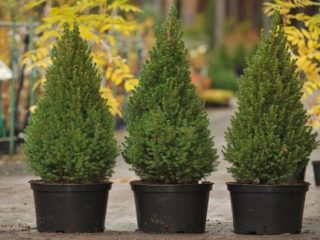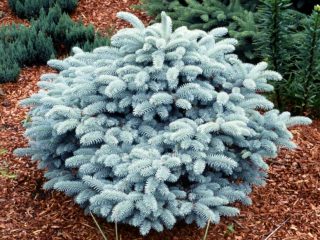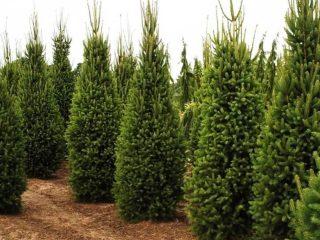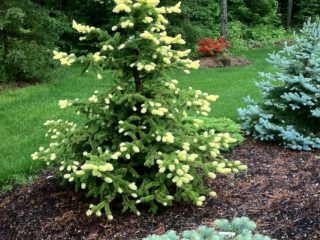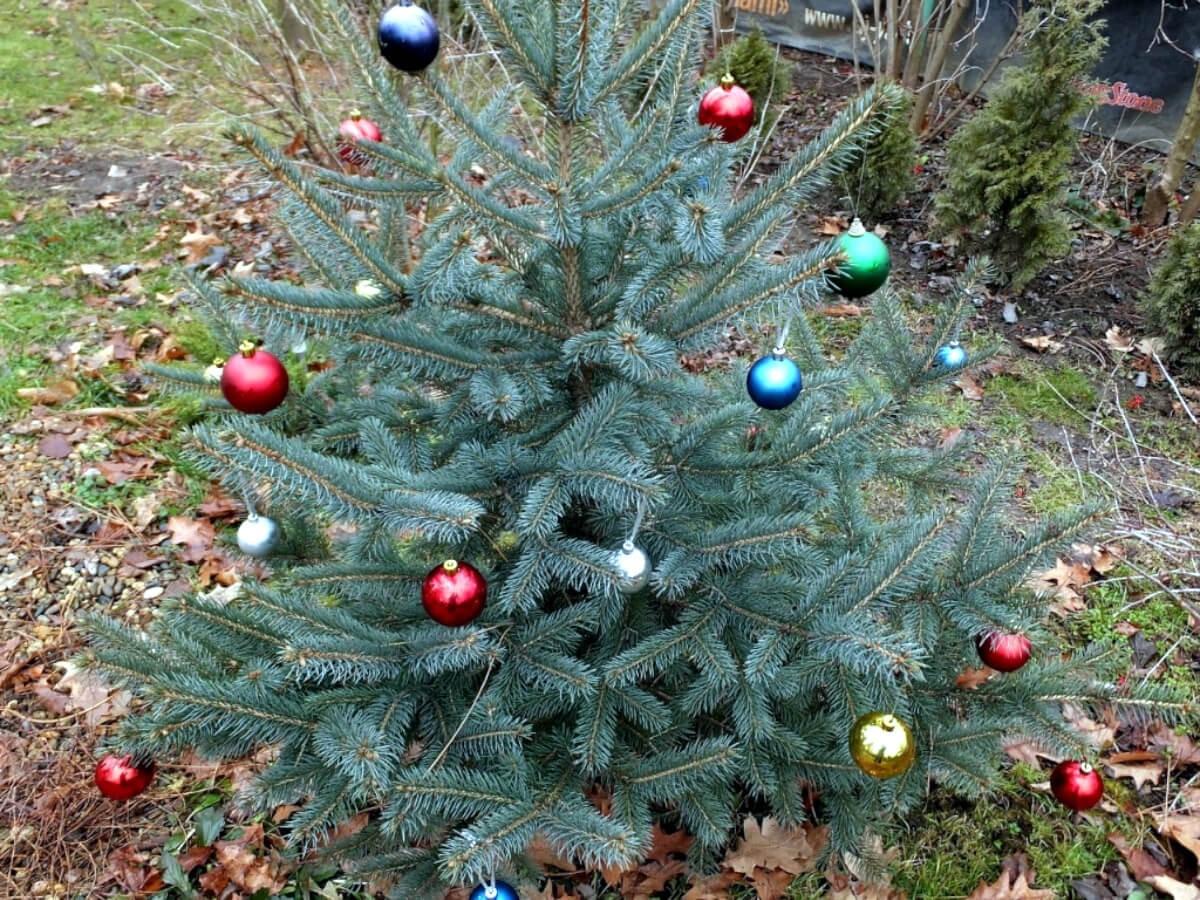Content
Akrokona spruce is an interesting tree with bright green, yellowish needles and red-pink cones. It takes root well in different soils, but requires timely watering. The features of planting and caring for this unusual plant are described in detail in the article.
Origin story
Common spruce Acrocona (lat. Picea abies Acrocona) is a fairly well-known and ancient variety, obtained in Finland in 1890. The crop is not included in the Russian register, but is quite widely known to many summer residents. You can purchase seedlings both in nurseries and in specialized stores.
Description of the common spruce Akrokona
Akrokona spruce is a low, slow-growing coniferous tree with a wide, spreading conical crown. It grows asymmetrically, so it often has an irregular shape. The central trunk is quite powerful and can withstand any gusts of wind. The side branches hang down slightly (arched) and are covered with gray-brown bark.
The needles are needle-shaped, each needle has four edges, with a sharp end, length from 1 to 2 cm, and thickness only 1 mm. The color is dark green, although often the needles of the Acrocona spruce are yellowish-green, which makes it even more attractive.
Young spring needles are usually all yellowish. Older branches have yellow needles only on the side that is well lit by the sun. The needles are preserved for a very long time - some needles live up to 8-12 years, after which they fall off, covering the tree trunk with a small layer.
Flowering occurs in May. Male spikelets are reddish-yellow in color, while female spikelets are deep purple. Cones are also formed in the spring, and even young Acrocona spruces produce them.
When unripe, the seed cone is bright red in color and contrasts well against the general background. As it develops it becomes light brown. The size of the Akrokona spruce cones is small. They are located clearly at the end of the branch. The cones hang down a little. At the same time, they sit tightly on the shoot - often the transition between the needles and the first scales is imperceptible.

Akrokona spruce reaches a height of no more than 3 m
Height of Acrocon spruce
Ephedra does not grow very quickly and reaches a small height - about 2-3 m by 10-15 years. At the same time, the crown is quite spreading, reaching 2-4 m in diameter. Thanks to this, the Akrokona spruce remains decorative throughout the years, especially if pruned regularly.
Growth rate of Acrocona spruce
The tree does not grow very quickly, but is stable. Every year it increases in height by 10-15 cm and in width by about the same.However, some species grow somewhat slower. For example, the common spruce Acrocona Golden adds only 8-10 cm annually. Accordingly, by the age of 10 it reaches a height of 80-100 cm and a width of 50-60 cm.
Advantages and disadvantages
Akrokona spruce is an unusual tree that is attractive not only for its needles, but also for its unusual cones. The needles are greenish-yellow, numerous, the crown looks dense. Thanks to different pruning techniques, you can get both a beautiful tree and an interesting bush. In addition, caring for the plant is not so difficult - even a novice gardener can cope with the task.

Akrokona spruce is decorative thanks to its pink cones
Pros:
- very beautiful needles;
- unusual color of cones;
- high winter hardiness;
- low maintenance requirements;
- good immunity to diseases and pests;
- Widely used for garden decoration.
Minuses:
- low growth rates;
- the tree grows asymmetrically;
- requires constant pruning;
- poor drought resistance.
Planting Acrocon spruce
Planting the Acrocona spruce can be planned for spring or autumn. In the first case, work begins at the end of March, before the period of active growth begins. As a last resort, it is advisable to arrive by mid-April. If you plant in the fall, you can do this literally at any time, but it is important to do it before the first frost, which can come even in early October.
Since it is undesirable to replant the Acrocona spruce, the planting site must be selected and prepared especially carefully. The instructions are:
- Determine a suitable site. It should be sunny and fairly dry (as far as possible from lowlands and nearby groundwater, for example, in a well).The soil should be loose and fertile - optimally loam or sandy loam soil with a slightly acidic or neutral reaction.
- Dig the soil to the depth of a spade bayonet. If necessary, the area should be cleared and the remains of other trees should be uprooted.
- If the soil is depleted, then before planting the Acrocon spruce it is recommended to add compost (5-7 kg per square meter) or complex mineral fertilizer (2 tablespoons for the same area).
- If it is known that the soil is too acidic, lime is added to it (150-200 g per 1 m2). If, on the contrary, it is alkaline, add brown-red colored high-moor peat (3-4 kg per 1 m2).
The planting of the Acrocon spruce itself looks like this:
- Several fairly spacious pits are marked (depth and diameter 60 cm) at a distance of at least 3 m.
- A layer of small stones is poured - pebbles, expanded clay.
- Place the seedlings in the center and sprinkle them with fertile soil.
- They compact it a little so that as a result the root collar of the Acrocona spruce remains flush with the surface.
- Water with settled water (4-5 buckets). It is also advisable to add a little Kornevin solution. If planting is done in the fall, then after a few days it is advisable to mulch the tree trunk circle with straw, sawdust or other material.
Caring for Akrokona spruce
Caring for the Akrokona spruce is not very difficult, but it should be noted that the tree does not tolerate drought well. Therefore, watering should be regular and quite abundant. If there is extreme heat, water is given twice a week. In other cases, they rely on the weather. You can water three times a month, giving 4-5 buckets at a time. In this case, the water must be settled.

Spruce Akrokona should be watered regularly
Another important point is that the tree needs a good flow of oxygen to the roots.To do this, the soil in the tree trunk circle should be constantly loosened, especially carefully after heavy rains and waterings. It is strictly forbidden to allow the surface layer to dry out, especially cracking and compaction. If necessary, weeding is also carried out along with loosening.
The Akrokona spruce should be fed especially carefully in early April. The first time, urea or ammonium nitrate is added in the amount of 20 g per 10 liters. In June, it is recommended to give complex mineral fertilizing, and at the end of summer, water the roots with an ash solution of 150-200 g per 10 liters. If it is not available, you can use a mixture of superphosphate (40 g per 10 l) and potassium sulfate (30 g per 10 l).
Is it possible to trim the Akrokona spruce?
Since the tree grows unevenly, trimming the branches can and should be done. You should initially outline the approximate shape and remove unnecessary branches that strongly protrude beyond the general contour. Moreover, it is recommended to do this either in early spring or at the end of flowering (early June). It is also important to remove diseased, dead branches.
Reproduction
It is quite difficult to propagate the Akrokona spruce. You can try to separate several cuttings (young 1-2 year old shoots) at the very beginning of summer. They are planted in fertile soil, watered abundantly and covered with a jar, and in the fall they are transplanted to a permanent place and mulched.
In professional nurseries, Akrokona propagation is carried out by grafting. It is difficult to reproduce the process at home. Therefore, it is best to purchase already grafted spruce seedlings, especially since they take root well.
Diseases and pests
One of the advantages of Akrokona spruce is its excellent resistance to various diseases and pests, even with minimal care. Only with excessive watering or too rainy summers can it suffer from root rot and other infections. To prevent this, it is recommended to treat with fungicides in the spring:
- "Profit";
- "Ordan";
- "Abiga Peak".
Of the pests, spruce aphids and spider glues are especially common. They are controlled using insecticides:
- "Aktara";
- "Decis";
- "Fufanon."
Akrokona spruce in landscape design
The description of the Akrokona Golden spruce and other varieties says that most often the tree is used in single plantings. Low and spreading conifers look beautiful against the background of well-groomed lawns, next to the house, along the perimeter of the flower garden or the borders of the site.
Akrokona spruce also looks good in group plantings and gardens decorated with stones. It is used in rock gardens, for framing alleys, and also when planting along paths. It is also well suited for decorating gardens in oriental style.
The main options for using spruce in garden landscape design are presented below:
- Planting in rows.
- Placement next to paths.
- Single landing option.
- Dwarf tree in the composition.
Conclusion
Akrokona spruce is the best conifer for decorating a garden. It is better to use it in group plantings, for example, to design a path or create an interesting rock garden. Caring for a Christmas tree is not too difficult, but you probably won’t be able to grow it yourself. It is advisable to purchase ready-made seedlings from trusted suppliers.
Reviews of the common spruce Akrokona



